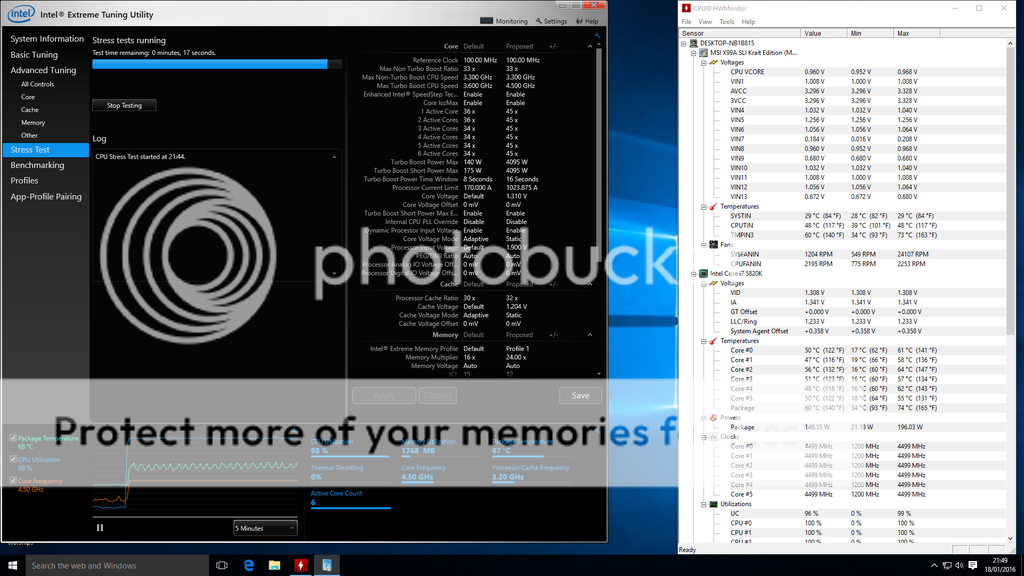So after completing my x99 build over the weekend, I've had my first bash at overclocking and would appreciate any comments and guidance to make sure I'm not royally screwing up particularly on the cache clocking
specs are as follows
5820k
msi krait
16gb hyper x predator @ 2400
r9 290
corsair rm650
the cpu and gpu are on a custom loop
currently I've got the core clock at 4.5ghz / 1.31V and the cache at 3.2ghz / 1.205V, VCCIN is set to 1.9V and all other settings are on auto
I've been running intel extreme tuning benches and 5 minute stress tests to check its stable (appreciate I probably need to stress for longer) - screen grab as follows
Am I right in saying 1.35 v core is the max voltage for 24/7 and if so should I be trying for 4.6 as for the cache how high should I be trying to go?
comments appreciated
Fritzo
specs are as follows
5820k
msi krait
16gb hyper x predator @ 2400
r9 290
corsair rm650
the cpu and gpu are on a custom loop
currently I've got the core clock at 4.5ghz / 1.31V and the cache at 3.2ghz / 1.205V, VCCIN is set to 1.9V and all other settings are on auto
I've been running intel extreme tuning benches and 5 minute stress tests to check its stable (appreciate I probably need to stress for longer) - screen grab as follows
Am I right in saying 1.35 v core is the max voltage for 24/7 and if so should I be trying for 4.6 as for the cache how high should I be trying to go?
comments appreciated
Fritzo



